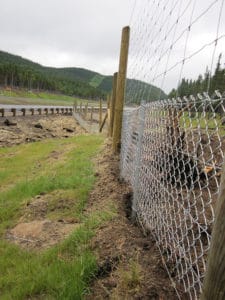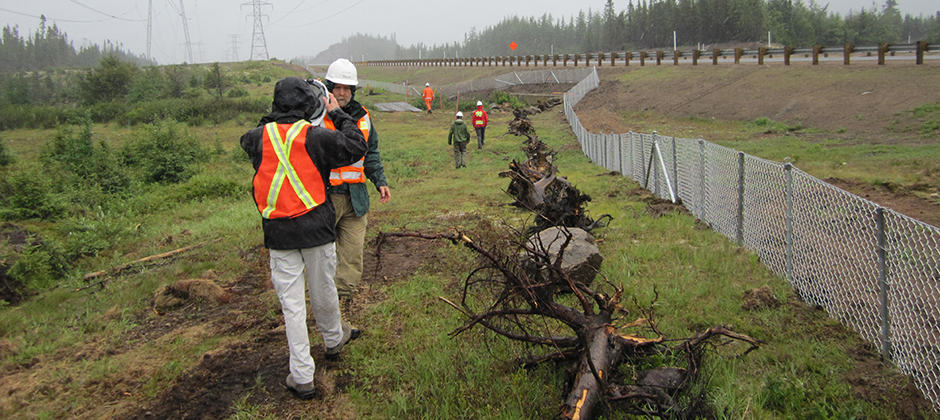Share this article
New fencing framework can help managers reduce roadkill
Fencing entire roads to reduce vehicle-wildlife collisions isn’t always practical or cost effective, and it may not be best for wildlife, either. So researchers recently came up with a way to help managers determine where and how much fencing may be necessary on perilous highways.
In a past meta-analysis, Jochen Jaeger, an associate professor at Concordia University in Montreal, and an international group of colleagues determined that fencing, especially when combined with crossing structures, is the best way to reduce roadkill compared to measures like roadside signs or guard rail reflectors.
But over lunch with Ariel Spanowicz, a student in his lab, and Fernanda Teixeira, a colleague from Brazil, they started to take the topic further. Just how much fencing was really needed? Is fencing needed in spots where wildlife isn’t crossing?
“The idea is to fence the hotspots of road mortality first,” Jaeger said. “Then, the question would be: How much faster can you reduce road mortality if you fence hotspots first rather than putting fences somewhere else?”
Spanowicz took the lead on a new study, published in Conservation Biology, in which the three researchers developed a framework to help managers determine the best way to fence roads, including fence length and placement.
 If dead animals were evenly distributed throughout the road, they figured, fencing would reduce roadkill the same amount, in a linear relationship. But what about a more real-life approach? Using road mortality data collected from a highway in southern Quebec and two in Brazil, the team determined which areas were roadkill hotspots, “warmspots” and “coldspots” and calculated how much mortality that would be avoided by fencing different sections.
If dead animals were evenly distributed throughout the road, they figured, fencing would reduce roadkill the same amount, in a linear relationship. But what about a more real-life approach? Using road mortality data collected from a highway in southern Quebec and two in Brazil, the team determined which areas were roadkill hotspots, “warmspots” and “coldspots” and calculated how much mortality that would be avoided by fencing different sections.
Zeroing in at finer scales, they found the number of hotspots was actually higher than at coarse scales, but the cumulative length of those hotspots was shorter.
Focusing just on those would mean some very short fences, Jaeger said, but that probably wouldn’t work. Animals could cross right next to them. Fencing a few long sections would reduce the number of mortalities at the end of fences. But longer fences would miss several of the fine-scale hotspots at other places along the road.
The result is what the team called the FLOMS tradeoff — Few Long Or Many Short fences. “Each option has its particular advantages, so we need to find the best balance in between,” Jaeger said.
The team developed “mortality reduction graphs” to help them determine where fences can be cut off. Jaeger hopes the paper can help managers deal with the sometimes controversial issues that surround fencing and the balance between maintaining landscape connectivity on the one hand and reducing wildlife mortality on the other. He suggests using coarse-scale analysis of hotspots for animals with higher mobility and finer scales for animals with low mobility when deciding where to implement fences.
“Now this needs to be applied and people need to try it for management and see how it goes,” he said.
Header Image: This fence helps keep medium-sized animals off of the road. Researchers helped develop a framework to determine where to place fences along roads and how long they should be. Credit: J. Jaeger








